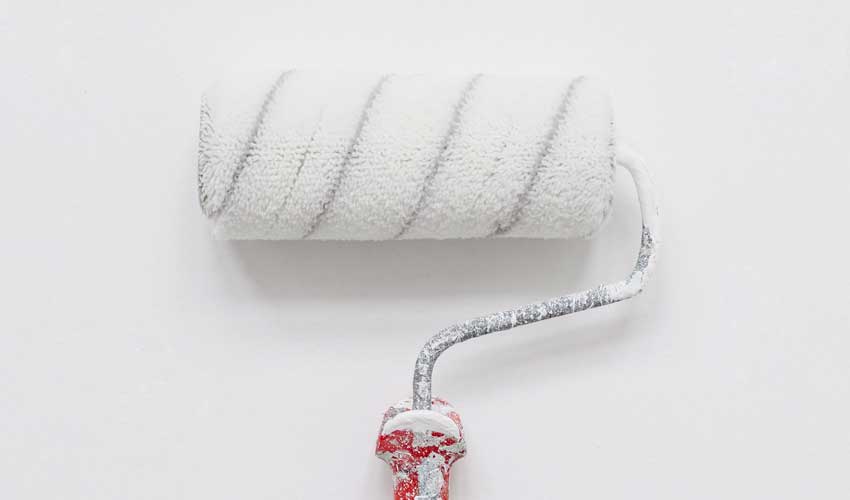When Designing Your Home, Don’t Pick Your Colors from Tiny Chips

When designing your home, it is nearly impossible to make a reasonable judgment about colors of materials for your new house by simply looking at tiny color chips or samples. They will fool your eye every time.
If you don’t believe me, try this little test. Go to the paint store, or your local Home Depot, and pick up a few color chips of paint. Be sure to get two of each color. When you get home, cut out the colors so that no white edges show. All you should have left is is small piece of paper with the color on it. Then place one of the chips on a white piece of paper and the other chip on some other color paper. Stand back and look at them. Do the colors look the same? I’ll bet they don’t.
Color is influenced by its context. If you try to make your color selections standing in the paint store and you only look at the color as it’s shown on the sample card, which likely will have a white background, you may miss the subtle hues, only to notice them later when the entire house is painted and changing the color will cost you plenty.
And speaking of hues, there is really no such thing as white. There are many colors of white. I know that sounds silly. After all, white is a color we can all identify. But actually there are many whites, each with its own unique underlying tone. A true white would be something along the lines of “copy paper” white, but even that may have a bluish cast when held up against a white with an underlying hint of yellow. There are “pinkish” whites, “greyish” whites, very, very pale yellows, and many more.
You will have trouble seeing these nuances in a tiny paint chip. It is necessary to paint a larger sample wall to really see what subtle hues each white contains. So buy a can of the white you are considering and paint it on a wall. Let the paint dry before evaluating it and look at it on a sunny day, a cloudy day, and under artificial light. Chances are it will appear somewhat different in each condition.
Most paint manufacturers group their paints in a way that will give you clues as to which “white” will go with which wall color. Let’s suppose you selected a Sherwin Williams color for the siding of your new house and it was “SW 6003, Proper Gray.” Then you were looking for the right white for the trim. How would you know which of the twenty-some whites they offer would go best with your siding color? In this case, you should select “SW 6000, Snowfall.” That’s because it is in the same color family as the siding color you already selected. In fact, all of the colors from SW 6000 through SW 6006, Black Bean, are in the same family. They all contain the same colors, but in varying intensities. So you can be certain they will go together. Another white, like SW 6049 Gorgeous White, might look just fine in a small sample. But when the trim was painted, it’s underlying brownish hue would show through and it would clash with the cooler gray of your SW 6003 siding.
Dark colors can be just as tricky. Suppose you wanted a dark Green or a dark Burgundy for your shutters. You might be inclined to pick a color that looks nice and dark in the small chip. But I’ll warn you that when your shutters are painted and you stand back from them, your dark green will mysteriously morph into Kelly Green and your very ark Burgundy will look a lot more like a Red Zinfandel. Dark colors will look lighter in larger areas and when placed on darker backgrounds. So to get the truly dark Green or Burgundy, select one that looks nearly black in the paint chip. Then, paint out a larger area just to be sure.
For the cost of a few cans of paint, you can avoid the costly mistake of having to repaint your entire house after the color gremlins change what you thought picked into something you never intended.
Click on the comment bar to tell us your story.
I hope this information is helpful to you. You might want to get yourself a copy of my best-seller, Designing Your Perfect House. It is chockfull of valuable tips and advice that will save you many times the cost of the book on your house building or remodeling project. You might also like The Well-Centered Home: Simple Steps to Increase Mindfulness, Self-Awareness, and Happiness Where You Live. It will show you how to make your home a happy place.

